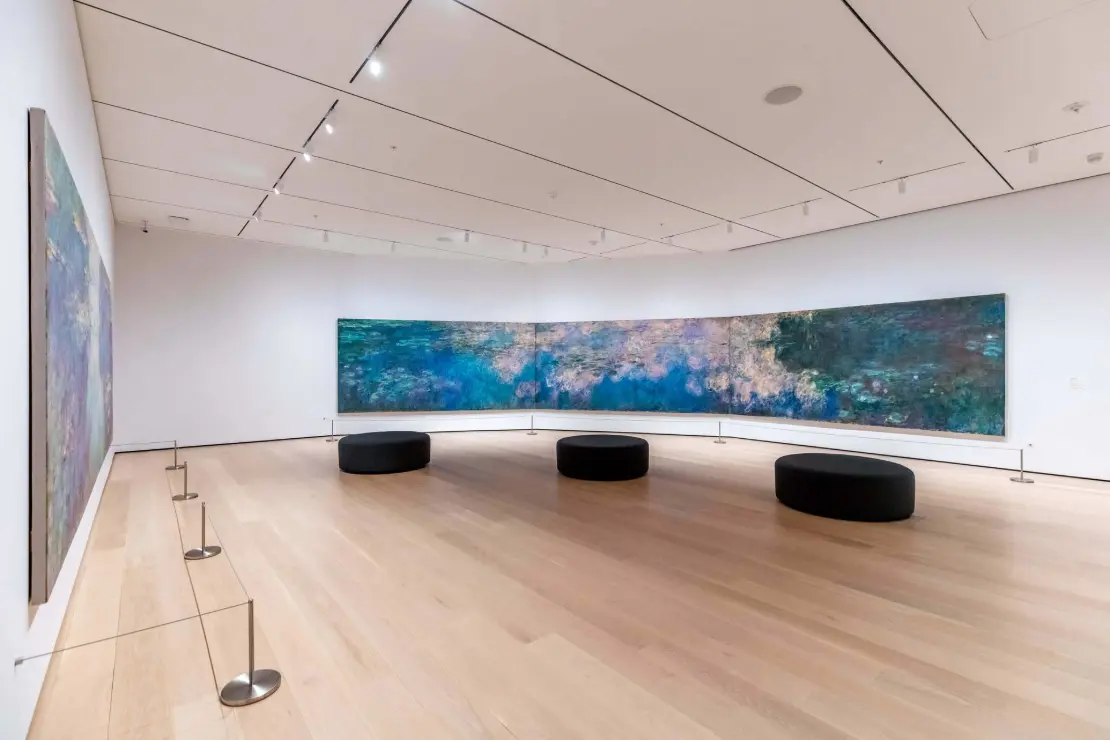Today’s architects and designers are asking wood to work harder. In modern spaces, they’re turning to it not for nostalgia or ornament, but to bring structure to open plan design and balance to harder materials.
How does wood perform in spaces defined by scale and restraint?
It moves across floors, walls, and ceilings, carrying tone and cohesion throughout a space. It supports rhythm, defines transitions, and holds scale. It absorbs light in ways concrete and glass can’t. And when carefully selected, it meets environmental goals while reinforcing spatial clarity.
At WoodCo, we work closely with design professionals who are doing exactly this. Using wood as structure, tone, and connective tissue to their spaces.
Here are four ways we see it shaping contemporary designs every day.
1. Sustainability Built In
Wood signals a commitment to sustainability. With low embodied carbon and the ability to be reclaimed, reused, and responsibly sourced, it fits seamlessly into net-zero frameworks and certification programs like LEED and WELL.
Reclaimed wood flooring adds visual texture and reduces material waste. At WoodCo, we work with FSC-certified oak, walnut, and hickory – sourced responsibly, finished carefully, and designed to last.

In the Museum of Modern Art expansion in New York, WoodCo supplied FSC-certified super select white oak plank and parquet flooring. The wide planks and long lengths minimized joints in the large open galleries, creating a subtle surface that doesn’t distract from the art.
By using select-grade, sap-free lumber, the design met both sustainability and performance targets, showing how the right wood supports scale, durability, and visual restraint all at once.
2. Wide Planks, Long Lines
In contemporary spaces, flooring plays a key role in establishing rhythm and proportion. One way designers reduce visual interruption is by using wide planks, like the Kirby Plank and Natural Plank. Longer lengths extend that effect, supporting uninterrupted sightlines and minimal transitions.
In the Johnston Residence, WoodCo’s wide Kirby Plank flooring connects the open kitchen and living areas with a calm, continuous surface. The broad boards bring scale and warmth without cluttering the visual field, allowing the architecture to feel open yet grounded.

3. Cohesion Across Planes
Wood plays a unifying role when used across floors, walls, ceilings, and integrated elements.
Wall cladding introduces rhythm and breaks up expansive surfaces. Ceiling panels help manage acoustics and bring scale to taller volumes.
In contemporary interiors, this continuity strengthens spatial clarity – connecting zones without visual disruption. Low-sheen or brushed finishes in oak or walnut keep the tone restrained while adding tactile richness that complements more minimal palettes.
4. Precision Through Specification
From thresholds, stair treads, built-ins, and wall-to-floor interfaces, contemporary architecture demands precision in every junction.
In Yeti’s Austin HQ (designed by Gensler), WoodCo’s engineered European oak flooring extends seamlessly up walls and stair millwork.
The consistent grain, precise machining, and unified finish show how wood can govern edge conditions with architectural clarity.
Because wood integrates across these details, it reinforces spatial logic, creating alignment between surfaces and circulation. When grain, scale, and finish are carried through at the detail level, the space gains a cohesive, purposeful layer.

Wood with Purpose
Contemporary architecture asks more of every material. When it’s used with care, wood answers with versatility, restraint, and clarity.
At WoodCo, we work with teams who treat material as part of the design language. Our role is to support that intent by providing premium wood that performs as well as it presents, and that holds its place in the architecture with purpose and precision.
If you’re working on a project that calls for precision and character, we’d love to help you find the right material solution. Get in touch to start the conversation.